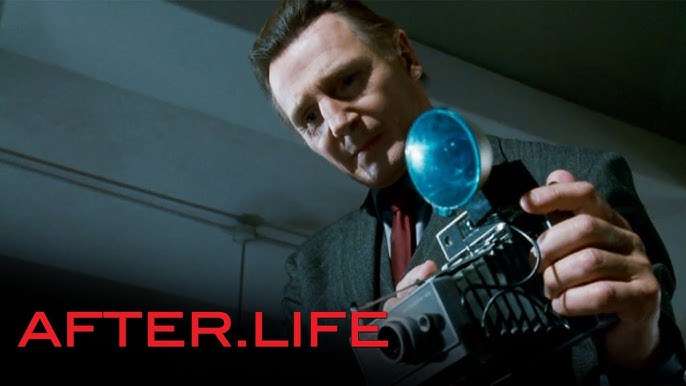🎬 After.Life (2009)

After.Life (2009) Review – A Psychological Thriller That Blurs the Line Between Life and Death
Introduction
After.Life (2009) is a psychological thriller directed by Agnieszka Wojtowicz-Vosloo, starring Christina Ricci, Liam Neeson, and Justin Long. The film delves into themes of death, perception, and the blurred boundaries between reality and the afterlife. With its eerie atmosphere, thought-provoking narrative, and unsettling performances, After.Life offers a unique cinematic experience that leaves viewers questioning what is real and what is imagined.
Plot Summary
The story follows Anna Taylor (Christina Ricci), a young woman who wakes up in a funeral home after a tragic car accident. She is informed by the enigmatic funeral director Eliot Deacon (Liam Neeson) that she has died and is now in transition to the afterlife. However, Anna remains conscious and doubts her death, suspecting that Eliot may have sinister motives.
Meanwhile, her grieving boyfriend Paul (Justin Long) senses that something is amiss and attempts to uncover the truth behind Anna’s fate. As the tension builds, the film explores whether Anna is truly deceased or if she is being manipulated by Eliot, who claims to have the ability to communicate with the dead.
Character Analysis
Anna Taylor (Christina Ricci)
Anna is a complex character struggling with inner turmoil even before her supposed death. Her journey throughout the film is one of self-discovery and acceptance, as she grapples with the reality of her situation. Ricci’s haunting performance adds depth to Anna’s character, making her both vulnerable and defiant.
Eliot Deacon (Liam Neeson)
Eliot is the film’s most enigmatic character. As the funeral director, he exudes both wisdom and menace, leaving audiences uncertain of his true nature. Is he genuinely helping souls transition to the afterlife, or is he a deranged manipulator? Neeson’s calm yet chilling portrayal adds to the film’s psychological intensity.
Paul Coleman (Justin Long)
Paul serves as the film’s emotional anchor, representing the perspective of the living. His growing suspicions and desperate attempts to reconnect with Anna highlight the themes of grief and denial. Long’s performance brings sincerity to the role, making Paul’s struggle compelling.
Themes and Symbolism
The Thin Line Between Life and Death
One of the film’s most intriguing aspects is its ambiguity regarding Anna’s state. The narrative plays with the idea that the mind and perception can shape reality, forcing both the character and the audience to question what is real.
Acceptance vs. Resistance
Throughout the movie, Anna resists her fate, reflecting a common fear of the unknown. Eliot repeatedly tells her that she must accept death to move on, raising the question of whether resistance to change is what truly holds people back.
Manipulation and Control
Eliot’s character embodies the theme of control—whether over life, death, or the perception of reality. His interactions with Anna and other characters suggest a deeper commentary on the power dynamics between the living and those who claim to have authority over the afterlife.
Cinematic Elements
Visual Style and Atmosphere
The film’s cinematography is hauntingly beautiful, with muted colors and dim lighting enhancing the eerie, dreamlike quality of the story. The contrast between the cold, clinical funeral home and the warmth of the world outside symbolizes Anna’s struggle between life and death.
Sound and Music
The soundtrack is minimal yet effective, using atmospheric soundscapes to create tension. Subtle orchestral pieces accompany the film’s most intense moments, enhancing the emotional weight of Anna’s journey.
Reception and Legacy
After.Life received mixed reviews upon release, with some praising its unique premise and psychological depth, while others criticized its ambiguity and slow pacing. However, over time, it has gained a cult following among fans of psychological horror and existential thrillers. The film’s thought-provoking nature makes it a compelling watch for those who enjoy narratives that challenge perception.










